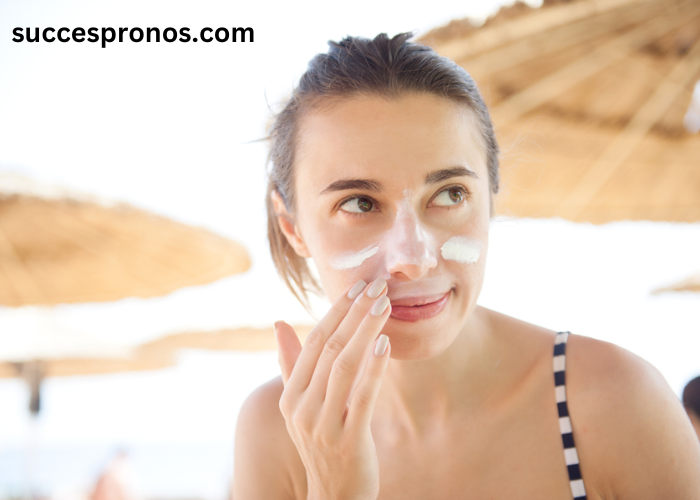
Are you confused by the long list of ingredients on your sunscreen label? Do you wonder which ingredients are essential and which ones to avoid? In this guide, we will break down the common ingredients found in sun-protection cream, highlighting what to look for and what to steer clear of.
Sunscreen is an essential part of any skincare routine, providing protection against the sun’s harmful ultraviolet (UV) rays. Understanding its ingredients is crucial for protecting your skin from harmful UV rays while avoiding potential irritants and harmful substances.
Active Ingredients to Look for
1. Zinc Oxide
A mineral component for U protection, zinc oxide provides broad-spectrum defence against UVA and UVB radiation. It is frequently present in mineral or physical creams. UV rays are reflected off the skin by zinc oxide, which is deposited on top of the skin. Due to its delicate nature, it can also be used on sensitive children’s skin.
2. Titanium Dioxide
A mineral component for UV protection, zinc oxide provides a broad-spectrum defence against UVA and UVB radiation. It is frequently present in mineral or physical creams. UV rays are reflected off the skin by zinc oxide, which is deposited on top of the skin. Due to its delicate nature, it can be used on children’s products and skin that is sensitive.
3. Avobenzone
Avobenzone is an ingredient that absorbs UVA rays. It is often used in combination with other ingredients to provide broad-spectrum protection. Avobenzone is effective but can degrade when exposed to sunlight. Look for formulations that stabilise avobenzone, ensuring long-lasting protection.
Ingredients o Avoid
1. Oxybenzone
Oxybenzone is an ingredient that absorbs UVB and some UVA rays. However, it has been linked to allergic reactions and hormone disruption. Opt for sun protection creams without oxybenzone to protect both your skin and the environment.
2. Octinoxate
Octinoxate is another ingredient that absorbs UVB rays. t may cause allergic reactions and has been found to disrupt hormones. Like oxybenzone, octinoxate is harmful to coral reefs. Choosing lotions without octinoxate is better for your health and the environment.
3. Retinyl Palmitate
Due to its antioxidant qualities, retinyl palmitate, a kind of vitamin A, is added to creams. However, when exposed to UV rays, it may make skin more sensiti e to the sun and could cause skin damage. Avoid lotions with retinyl palmitate, especially if you have sensitive skin.
Additional Ingredients to Consider
1. Antioxidants
Antioxidants such as vitamin C, vitamin E, and green tea extract can enhance the cream’s effectiveness by neutralising free radicals generated by UV exposure. These ingredients can provide additional protection against sun damage and help maintain healthy skin.
2. Moisturisers
Ingredients like hyaluronic acid, glycerin, and aloe vera can keep the skin hydrated while wearing sun protection cream. Moisturised skin is more resilient to sun damage, and these ingredients can help prevent dryness and irritation caused by sun exposure.
3. Non-Nano Particles
When choosing mineral sun protection, look for non-nano particles of zinc oxide and titanium dioxide. Non-nano particles are larger and sit on the skin’s surface without penetrating it, reducing the risk of potential health concerns. Non-nano mineral creams are also safer for the environment.
Choosing the right sunscreen involves understanding the ingredients and their effects on both your skin and the environment. Look for ones wi h ingredients like zinc oxide, titanium dioxide, and avobenzone for effective protection. Avoid harmful ingredients such as oxybenzne, octinoxate, and retinyl palmitate. By being informed about what is in your lotion, you can make better choices for your health and enjoy the sun safely.